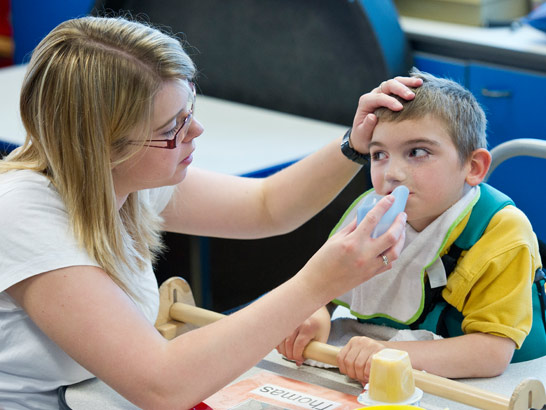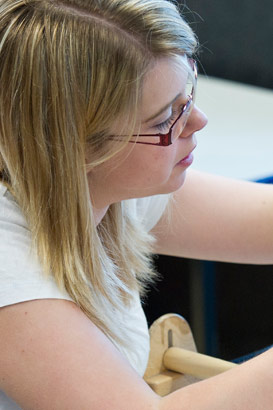
Under the Human Rights Act 1998 and international law, everyone has a right to privacy, dignity and safety.
Dignity and privacy are difficult to define and depend on the views (e.g. personal, cultural, religious) of the person concerned and their family.

Dignity can be thought of in two ways:
- A personal dimension contributing to identity and self-respect.
- How we appear to others and how they treat us.
Dignity has been described as including self-identity, self-respect/esteem, integrity, trust, human rights, equality, choice, autonomy, independence, control and confidence.
Dignity can be supported or undermined - for example, by resources and other people's attitudes (eg respect, ridicule), behaviours (eg inappropriateness), level of skills (eg lack of skill can cause humiliation, embarrassment) and management of sensitive situations.
(Billings et al, 2009)
People with learning disabilities have the right to privacy both in terms of personal space and personal information
Highland Learning Difficulties and Relationships Group, 2007
Privacy, too, can mean different things depending on the person themselves, use and context. It can include:
- Understanding the difference between private and public.
- The right to choose to be alone.
- Freedom from intrusion.
- Protection from public view during intimate care.
- Acknowledgement of personal space by others (e.g. asking permission before entering).
- Appropriate covering/clothing.

"Undignified care is that which renders individuals invisible, depersonalises and objectifies people, is abusive or humiliating, narrowly focused and disempowers the individual."
Tad et al, 2011

To respect a child's privacy and dignity requires a person-centred approach. It is important to think about the impact on the whole person when attending to their needs:
- Physical
- Psychological
- Emotional
- Social
- Spiritual
- Religious
- Cultural
(Smith and Field, 2010)


Key elements of dignified care include:
- Respectful communication.
- Respecting privacy.
- Promoting autonomy and a sense of control.
- Addressing basic human needs such as nutrition, elimination and personal hygiene needs in a respectful and sensitive manner.
of participation by providing adequate information to aid decision-making.
(Tad et al, 2011)

How we think of privacy and dignity is very personal.
Think of a child with SLD /PMLD/CLDD whom you know well.
In each area of personal care, think of all the ways privacy and dignity for the child could be created in very practical ways by the person attending them.
Ask your colleagues and, if appropriate, the child's family for their ideas.

While the use of medical and geriatric texts is a sensitive issue when used to inform work with children with SLD /PMLD /CLDD, there has been comparatively little written on the topics of privacy and dignity in personal care relating to this group of CYP in educational settings.
As this is the case, it is important to apply what has been learned about relevant good practice in other areas, bearing in mind the inappropriacy of a direct alignment of medical and geriatric models with this group of CYP.

Billings, J., Alaszewski, H., Wrag, A., Holdsworth, L., Brigden, C. and Jenkins, L. (2009) Privacy and Dignity in Continence Care: Phases 1 and 2. Canterbury: University of Kent/Royal College of Physicians/British Geriatric Society.
Highland Learning Difficulties and Relationships Group (2007) Working with People with Learning Disabilities about Relationships and Sexuality: Good Practice Guidance for Staff. Inverness: The Highland Council/NHS Highland.
Smith, B. and Field, L. (2010) 'Privacy and dignity'. In: B. Smith and L. Field (2010) Nursing Care: An essential guide for nurses and healthcare workers in primary and secondary care. Harlow: Pearson Higher Education.

Tadd, W., Hillman, A., Calnan, S., Calnan, M., Bayer, T. and Read, S. (2011) Dignity in Practice: An exploration of the care of older adults in acute NHS Trusts. Cardiff/Kent: University of Wales/University of Kent.